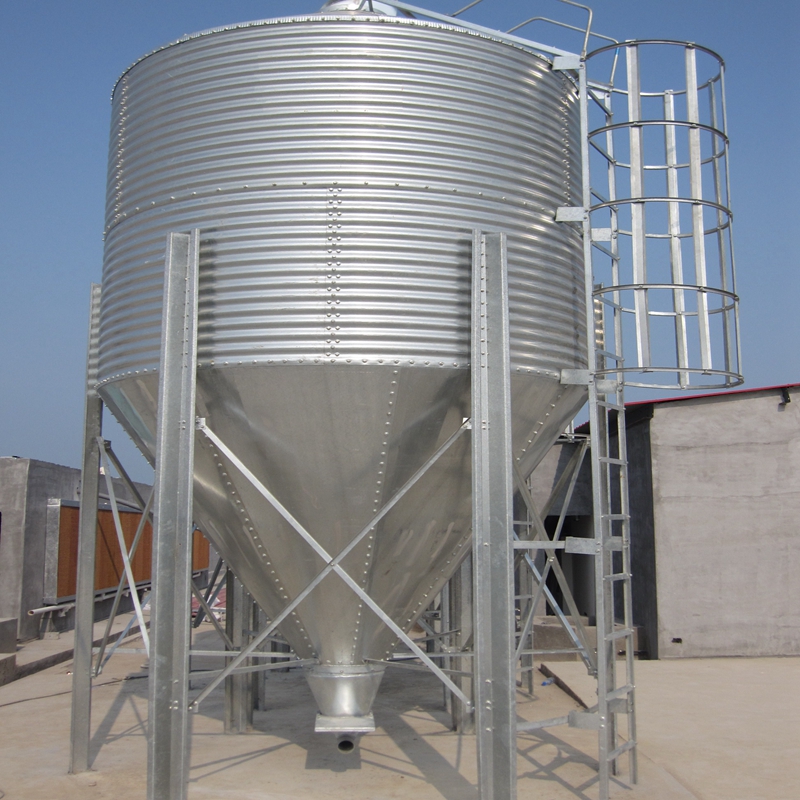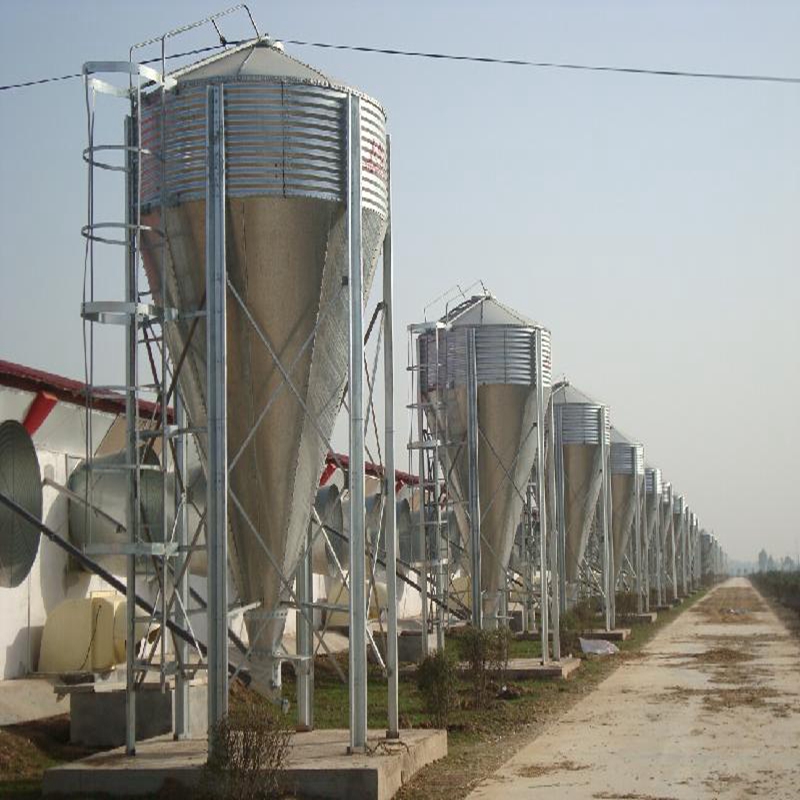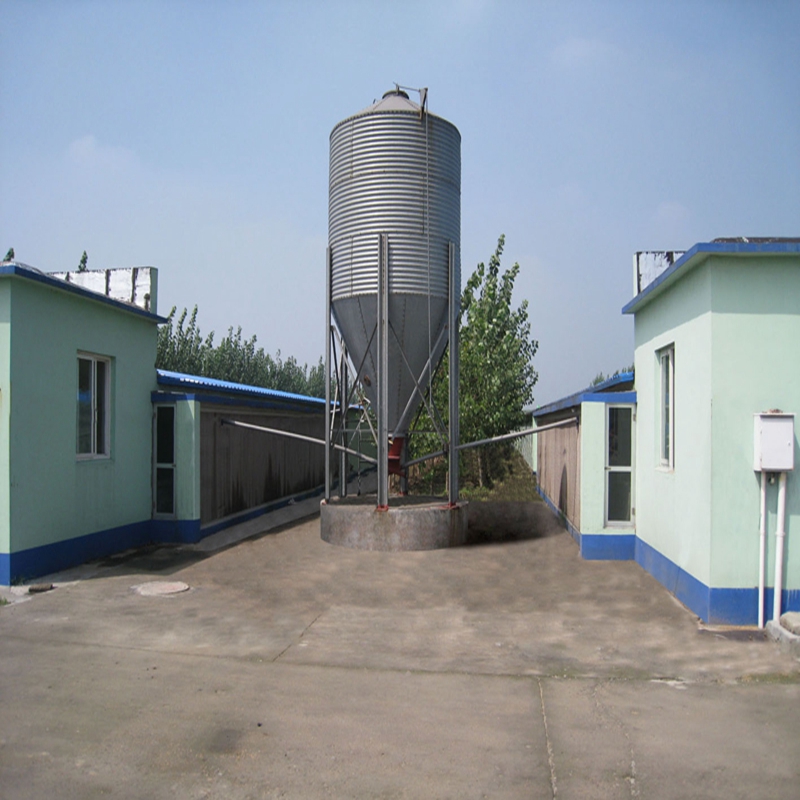Need a silo automatico with smart dosing and rapid loading?
Oct . 06, 2025 08:40 Back to list
Need a silo automatico with smart dosing and rapid loading?
The practical guide to choosing a silo automatico for modern poultry and feed operations
If you manage birds, feed, or raw grains, you already know: storage is half the battle. Automation, to be honest, is the other half. I’ve been walking farm yards and feed mills for years, and the most underrated upgrade is a well-engineered silo automatico—specifically, a galvanised feed tower with predictable discharge and clean-out.

What’s special here
This model—Feed Silo Metal Silo Galvanised Feed Tower for Poultry House—comes from Jinwang Western Street, Industrial Zone, Anping County, Hengshui City, Hebei, China. It’s a hopper-bottom steel silo, meaning gravity does most of the work and residue is minimal. The cone is strong, the legs are braced, and (surprisingly to some) the self-cleaning effect matters a lot for biosecurity and feed freshness.

Product specs at a glance
| Parameter | Spec (≈ real-world) |
|---|---|
| Capacity range | 8–40 m³ (≈ 6–30 t, feed dependent) |
| Material | Galvanized steel, ASTM A653/Z275–Z350 |
| Cone angle | 60–67° for free-flowing feed |
| Discharge rate | Up to 6 t/h (auger-assisted) |
| Finish | Hot-dip / pre-galv; ISO 1461 guidance |
| Service life | 10–15 years in typical farm atmospheres |
| Options | Level sensors, load cells, anti-bridging, aeration, sight glass |
| Certs (typ.) | CE, ISO 9001; EN 1090 for structural fabrication |
How a silo automatico runs the day
Materials: corn, wheat, premix, pellets, even seeds or flour; some users in aquaculture and chemicals too. Method: truck unload → screened inlet → fill via roof hatch → aeration as needed → gravity discharge → auger to poultry house. Controls: level sensors trigger feed orders; optional load-cell batching. Testing standards: coating thickness per ISO 1461; material per ASTM A653; structural checks to EN 1991 wind loads. In the field, we sample moisture (target ≈ 12–14% for grains) and check fines weekly. Service life? Around a decade plus if you wash down the skirt and keep bolts tight.

Where it fits
Broiler and layer houses, feedlots, small feed mills, seed depots, and yes, some chemical powders with good flowability. Many customers say the biggest gain is fewer clogs and cleaner augers; it seems that consistent cone geometry helps.
Vendor landscape—quick comparison
| Vendor | Coating | Automation I/O | Lead time | Notes |
|---|---|---|---|---|
| Yize Machine (China) | Z275–Z350 (≈ 20–25 μm) | Dry contacts, Modbus via gateway | ≈ 3–6 weeks | Strong cone, good price-to-value |
| EU Brand A | Z450 option | Native PLC modules | 6–10 weeks | Premium, higher list price |
| Local Fabricator | Varies (painted/galv) | Custom | 2–8 weeks | Great support; specs may vary |
Customization that actually matters
Pick diameter/height to match daily feed burn rate; choose cone angle for your mix; add load cells if you bill by batch. Brand your bins if you host visitors—sounds trivial, but it impresses buyers. For harsh coasts, bump coating to Z350+ and request C4 paint on legs per ISO 12944.

Field notes and mini case studies
Emilia‑Romagna broiler farm (24k birds): switched to a silo automatico with level probes; feed waste dropped ≈ 2.1%, auger jams basically disappeared. Andalucía cooperative: two 25 m³ silos feeding a micro-dosing line; inventory accuracy improved from ±12% to ±3% after adding load cells and weekly calibration. Feedback has been consistent—“clean-out is quick, and ordering is easier.”
Quality, compliance, and test data
Panels check out per thickness gauge; zinc layer spot-tested (magnetic) shows ≈ 230–300 g/m². Welds audited to EN 1090 practices; bolt torque logs kept. Dust counts near vents dropped around 18% after adding sock filters. For food safety systems, tie it into ISO 22000 documentation and keep sieve tests for fines on file—auditors love that.
Bottom line
A durable silo automatico with a proper cone and sensible automation pays back in fewer clogs, cleaner barns, and predictable feed flow. Not glamorous, but it works—day after day.
References
- ASTM A653/A653M – Standard Spec for Steel Sheet, Zinc-Coated (Galvanized).
- ISO 1461 – Hot dip galvanized coatings on fabricated iron and steel articles.
- EN 1090 – Execution of steel structures and aluminium structures.
- ISO 22000 – Food safety management systems.
- FAO – Grain storage management guidelines (Food and Agriculture Organization).
-
Efficient & Sustainable Chick Brooding Cage Systems for Modern Poultry Farming
NewsNov.24,2025
-
Cage for Chick: Optimizing Poultry Care for Global Food Security
NewsNov.23,2025
-
Baby Chicks Cage – Global Solutions for Sustainable Poultry Farming
NewsNov.22,2025
-
Baby Chick Cage: The Essential Guide to Brooding Solutions for Poultry Farmers
NewsNov.22,2025
-
Understanding Square Grain Silos: Global Impact, Benefits, and Trends
NewsNov.21,2025
-
Automatic Feeding Line System-Anping County Yize Metal Products Co., Ltd.|Automated Feeding&Watering
NewsNov.21,2025






